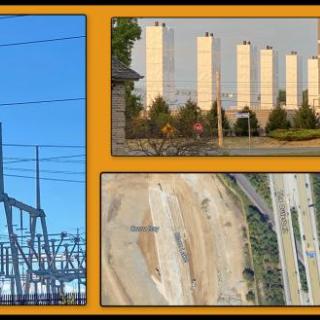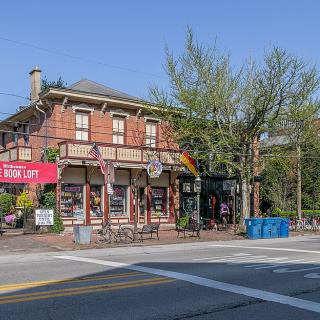Advertisement
Let’s face it. Columbus needs to be more like Austin.
Both are state capitals and have massive urban public universities. Both are left-leaning oases. Both began to explode in growth during the 1990s, and for the most part remain landlocked boomtowns.
But one is where many want to visit and live, where the other is maligned for not much to do and a lack of culture. Worse, too much disparity between rich and poor.
Guess which one is Columbus y’all?
Austin is not the slacker hippie, Willie Nelson-loving live music paradise it once was in the 70s, 80s and even 90s. But its public access to oh-so close outdoor adventure remains unparalleled.
Take Barton Springs, called “the soul” of Austin. The natural spring or pool is open year-round, with acres of parks and trails branching out in all directions. It’s icy clear waters drawing people from around the world, its surrounding banks filled with locals and tourists taking a serious chill as someone plays an acid-sounding guitar.
Developers tried to sneak in condos close to Barton Springs but Austin’s history of (mostly) putting the community first ahead of a select few seeking huge money off 900-square foot studios sent the developers scurrying away.
Let’s also realize many lefties and young progressives have left Columbus for places like Austin and other progressive urban islands. Now Austin is on the verge of becoming North America’s most popular city, an international destination as more and more tech companies base their headquarters there, enticing the world’s most talented with Barton Springs, unlimited hiking, and mountain biking trails, kayaking, and more.
Columbus has struggled to find its identity for decades, and unfortunately, as Ohio trends more MAGA, luring cool progressives and neo-hippies to the heart of the state will become more challenging. Quarry Trails, the soon-to-be open new Metro Park, certainly is going to help – but bewildering, say some, is how mixed-used development, much of it still in the works, is too integrated with new park.
Fantasize this…What if Columbus, somewhere near the heart of the community, had a Barton Springs? Open from late April to late September, as our summer’s grow longer post climate change. At the very least we can dream.
There could have been such a place and it’s in Grandview Heights. A hidden, well-kept secret, surrounded by condos and expensive apartments. A roughly mile long, 1000-yard wide spring-fed former limestone quarry just off West 5th Avenue, just a short walk from the Scioto River and roughly two miles from Quarry Trails. The apartment complex on the north end of the quarry is called Runaway Bay and the condos south of there the appropriately named Hidden Lake.
Even if the truth of what exactly happened is in question, the story of how Runaway Bay and Hidden Lake came to be is quintessential Columbus. In essence, a select few despotic elitists decided their own financial interests were far more important than allowing the entire community to enjoy a picturesque lake and all it has to offer.
Legend has it, as told by several Hidden Lake condo owners to the Free Press, a mining company digging out the limestone in the 1970s or 1980s, accidentally dug too deep and punctured an aquifer. The quarry filled so fast the mining company’s vehicles and equipment were engulfed and remain on the bottom of Hidden Lake to this day. But that may just be folk tale.
“There’s a significant number of quarries around the southern part of Grandview and the western side, and once they were no longer functioning, they were abandoned and every one of them filled up with water,” says Wayne Carlson, former trustee for the Grandview Heights/Marble Cliff Historical Society.
The quarries in Grandview helped build Ohio. Mining began in the 1830s and their limestone can be found in our freeways, buildings, the Ohio Statehouse and Ohio Stadium. The limestone was also ground into powder to manufacture steel.
Italian immigrants flooded into the area to make $1 a day wielding pickaxes helping turn Marble Cliff Quarry Co. into the largest limestone mining operation in the US at the time. The owner was Sylvio Antonio Casparis, a tyrant taskmaster who built a nearby mansion and would spy on his laborers with a telescope, and any who slacked would be beaten.
Before first generation Italians called the limestone belts on the Scioto’s western high banks home, Native Americans thrived here for thousands of years. The impressive Shrum Mound is also in walking distance, and many more nearby mounds were destroyed over time by invading settlers.
Marble Cliff Quarry Co. dug out Runaway Bay and Hidden Lake, and the quarry was sold to the Kaufman family, one of Columbus’s legendary developers, sometime in the middle of last century. The Kaufman’s in the 1980s then sold the quarry to developers, such as the Daimler Group, another “The Columbus Way” approved developer.
Soon enough some of the most expensive condos and apartments at the time ringed the quarry. Parts of the limestone walls were dug out and several miniature beaches were created for tenants only. Offices were built on the quarry’s northern side, now occupied by the Daimler Group and the default litigation law firm Manley Deas Kochalski, LLC.
It’s fitting a default litigation law firm – which specializes in kicking people out of their properties – occupies one of the quarry’s prime spots. Worse is how Runaway Bay management charges it’s mostly 20-something tenants $100 a summer to swim and kayak in the lake.
After the land was gutted of its natural resources, and those who did all the heavy lifting exploited for $1 a day, the quarries and their surrounding woodland should have been given back to the people instead of jamming in unsightly residential so to make more huge and easy money.
“You won’t hear me disagree,” says Wayne Carlson. “You know how money talks.”
The City of Columbus, as of June, has received $93 million from the pandemic’s American Rescue Plan of an expected $187 million. Mayor Ginther has put a small percentage towards youth programs and plans are in the works on how to spend the rest.
Thus funding to turn Runaway Bay into “Getaway Beach” for one and all is presumably available. The next hurdle would be the offices of the Daimler Group and the Manley Deas Kochalski, LLC. The question to them is, are these offices currently in use, and if not, will employees be returning even though the pandemic has no end in sight?
If the offices are empty, would they be willing to sell the property to Grandview with help from Columbus’s pandemic funds?
Knowing how “The Columbus Way” works, the Free Press can hear their laughter echoing across Runaway Bay and Hidden Lake.
But we can dream, especially when the new Quarry Trails metro park is comprised before it even opens.
Knock down the offices and dig out the limestone walls and replace them with white sand. Tear out the parking lots to make a park. Set up a boundary within the spring-fed lake so tenants at both Runaway Bay and Hidden Lake have their areas. And for good measure, obliterate the iHeartMedia local corporate office across the street from the law firm.
Carlson says Daimler and others selling their office space at Runaway Bay and Hidden Lake, even if these offices have been vacated due to the pandemic, sounds “pretty altruistic from a standpoint of a company like that.”
“You know how beautiful it is,” he says.









